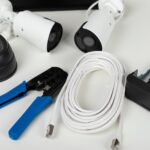With water damage ranking among homeowners’ most costly and common issues, effective water leak detection systems have become a vital ally in safeguarding your property. These systems rely on the seamless integration of sensors and apps to provide timely alerts, yet many users face challenges in achieving reliable communication.
- Understand the common pitfalls that disrupt communication between water leak sensors and mobile applications, affecting your system’s reliability.
- Identify key technical and environmental factors that can lead to issues in signal transmission, ensuring you know what to look out for.
- Discover practical solutions to address integration problems, from optimizing sensor placements to ensuring up-to-date software.
By diving into the intricacies of sensor and app integration, this article equips you with the knowledge to maintain an effective water leak detection system. Stay ahead of potential issues and secure your home from costly water damage.
Understanding Home Water Leak Detection System Alerts: Sensor and App Integration Issues
Home water leak detection systems play a vital role in protecting properties by sending timely alerts to homeowners. These alerts rely on the effective integration between sensors and their associated mobile applications. When water leaks occur, sensors detect moisture or changes in the environment and communicate this information to your smartphone or tablet.
However, the integration of sensors with mobile apps can face challenges that may delay or prevent alerts. Common integration issues arise from various complexities inherent in technology. Factors like connectivity, compatibility, and app performance contribute significantly to these challenges. Given that water damage can lead to costly repairs, being aware of these challenges allows homeowners to act swiftly and make necessary corrections.
To ensure the water detection system works seamlessly, it is crucial to understand the potential integration issues between the sensors and apps. By doing so, you can be proactive in mitigating any disruptions, thus keeping your home safe from unexpected water damage.
Key Factors Affecting Sensor and App Communication
Several aspects can interfere with communication between water leak detection sensors and their companion apps, affecting alert effectiveness. Environmental influences such as physical obstructions within the home can weaken signals sent from the sensors. Thick walls, furniture, or metal objects might impede the transmission, leading to delayed notifications.
Technical limitations also play a part, with issues such as incompatible software versions or outdated firmware affecting the seamless operation of these systems. It is essential to ensure that both the sensor’s firmware and the app are updated to the latest versions for optimal performance.
Installation errors represent another critical factor. Sensors need to be strategically positioned in areas most prone to leaks, such as basements or beneath sinks. Improper installation can result in weak signal strength or even failure to detect leaks altogether.
Understanding these factors helps homeowners maintain efficient communication between their sensors and apps. By addressing these potential obstacles, you enhance the reliability of your water leak detection system, safeguarding your property from water damage risks.
Resolving Home Water Leak Detection System Alerts: Sensor and App Integration Issues
The integration of sensors with mobile applications is a critical component in maintaining the efficiency of your home water leak detection system. When integration issues arise, they can compromise the system’s ability to send timely alerts. Here, we delve into practical steps and solutions that can help you troubleshoot and resolve these integration challenges.
Adjusting Sensor Locations
One of the most common causes of communication issues between sensors and apps is poor placement. Ensuring sensors are placed in optimal positions is vital. Avoid installing sensors in areas with heavy interference from physical barriers such as thick walls or metal objects, which can disrupt signal transmission.
Inspect areas vulnerable to water leakage, like under sinks or near water heaters, making sure sensors are within range of the gateway or home Wi-Fi. Regularly test sensor connectivity and adjust their positions whenever necessary to enhance signal strength and reliability.
Software Updates and Settings Configuration
Outdated software can hinder smooth operation. Always keep your app and sensor firmware updated. Developers frequently release updates to fix bugs, improve compatibility, and enhance the security of your leak detection system.
Moreover, delve into the app’s settings to ensure proper configuration for alerts and notifications. Verify that the mobile device’s notification permissions are appropriately set to receive real-time alerts from the detection system.
Improving Connectivity
Connectivity is crucial for effective communication between your sensors and app. Consider the quality and coverage of your home’s Wi-Fi network. If connectivity is weak, think about upgrading the network or installing Wi-Fi extenders to boost coverage.
Additionally, ensure that the detection system supports current connectivity standards, like Bluetooth or Zigbee, which can enhance communication reliability. In some cases, integrating a smart home hub might improve coordination between different smart devices, including your leak detection system.
By carefully addressing these aspects of sensor integration, you can maintain a reliable water leak detection system. This proactive approach not only prevents water damage but also enhances the longevity and efficiency of your setup. Keep exploring modern integration techniques to stay ahead in protecting your home from unexpected leaks.
Frequently Asked Questions about Home Water Leak Detection Systems
What are common signs of communication issues between sensors and apps?
Common signs include delayed or no alerts from the app, incorrect sensor status updates, and unexpected app errors.
How can environmental factors impact sensor communication?
Environmental factors such as physical obstructions, interference from other electronic devices, and thick walls can disrupt wireless signals between sensors and apps.
What should I check first if my sensor isn’t communicating with the app?
Ensure the sensor is powered and within range of your Wi-Fi network. Also, check the app settings for correct configurations.
Can software updates improve sensor and app integration?
Yes, updating both the app and the sensor firmware can resolve bugs and enhance communication efficiency.
Is professional help necessary for resolving integration issues?
If troubleshooting doesn’t resolve the issue, consulting a professional may be necessary to prevent potential water damage.





